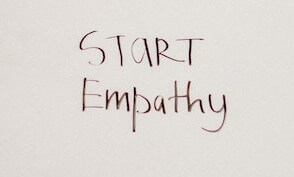All About Leadership: How Do I Lead?
- Extensive guidelines for leading oneself, other individuals, groups and organizations
© Copyright Carter McNamara, MBA, PhD, Authenticity Consulting, LLC.
Adapted from the Field Guide to Leadership and Supervision in Business
and Field Guide to Leadership and Supervision for Nonprofit Staff.
It seems there has been an explosion of articles about leading and leadership and what to do to be a great leader. Their suggestions can seem so broad and wide-ranging that it can be difficult to know just what to do next when trying to lead. Some seem so romanticized and idealized that it is hard to imagine anyone being a truly great leader. Yet, there are some practical skills needed in leading, and they can quite different depending on whether you are leading yourself, other individuals, groups or organizations — and on the situation each is in. This topic provides the resources to develop those skills. However, if you want to truly understand leadership (and this topic assumes that you do), then you should be acquainted with its broad context, including the diversity of theories, models and styles in leadership. This topic mentions all of those, as well.
The guidelines and resources in this topic are not sufficient to develop strong competencies in leadership. Those competencies come from extensive experience in applying that information.
Sections of This Topic Include
- What is Leadership?
- To Truly Understand Leadership, Know Its Broad Context
- Test – What is Your Own Preferred Leadership Style Now?
- Miscellaneous Topics and Perspectives in Leadership
Also consider
Related Library Topics
WHAT IS LEADERSHIP?
Different Definitions
Books and trainings about leadership often start by defining leadership. It is based on the premise that if you can come to your own definition, then you will be more clear about whether you are successfully leading or not, and you will be able to explain to your followers how you are leading them and why. When coming to your own definition, it helps to consider others’ opinions and definitions.
Leadership Defined (includes numerous definitions of leadership)
There are hundreds of definitions of leadership and this is not an attempt to come to a consensus on a definition. The hope is to get readers to reflect on what they believe about leadership. It is also an attempt to give blog participants a general sense of how certain “experts” are describing leadership, in the hope that you may come to your own definition, which can then be used to guide your work.
What is Leadership?
Some view leadership as a series of specific traits or characteristics. Others see it as comprised of certain skills and knowledge. And some, me included, think of leadership as a process. This view of leadership, as a process, places an emphasis on social interaction and relationship. This is the idea that leadership is a type of relationship, one that typically includes influencing others in a certain direction. This leads to my current working definition of leadership: Leadership is a relationship that involves the mobilizing, influencing, and guiding of others toward desired goals. This definition does not assume that the goals are shared or even explicit. The word desire simply means that someone in the relationship, perhaps just the person in a leadership role, wants a particular outcome. The following are some definitions that have a bias toward leadership as a process:
- “Leadership is a process of giving purpose (meaningful direction) to collective effort, and causing willing effort to be expended to achieve purpose.” (Jacobs & Jaques)
- “Leadership is the process of influencing the activities of an individual or a group in efforts toward goal achievement in a given situation.” (Hersey & Blanchard)
- “Leadership is an attempt at influencing the activities of followers through the communication process and toward the attainment of some goal or goals.” (Donelly)
- “Leadership is defined as the process of influencing the activities of an organized group toward goal achievement.” (Rauch & Behling)
- “Leadership is interpersonal influence, exercised in a situation, and directed, through the communication process, toward the attainment of a specified goal or goals.” (Tannenbaum, et al)
It has been my experience that many organizational leaders, knowingly or unknowingly, view leadership as a set of specific traits or skills. Below are a few definitions that are grounded in skills and, to a lesser extent, traits.
- “Leadership is a function of knowing yourself, having a vision that is well communicated, building trust among colleagues, and taking effective action to realize your own leadership potential”. (Bennis)
- “Leadership is about articulating visions, embodying values, and creating the environment within which things can be accomplished.” (Richards and Engle)
- “Leadership is the creation of a vision about a desired future state which seeks to enmesh all members of an organization in its net.” (Bryman)
- “It is a complex moral relationship between people, based on trust, obligation, commitment, emotion, and a shared vision of the good.” (Ciulla)
These definitions are entirely valid perspectives — they are simply different from a leadership as process perspective. Having said that, it is my impression that, overall, definitions of leadership are becoming more process and relationship oriented.
How Important Is It to Have a Definition of Leadership?
In my role as a leadership consultant it is not necessary for me to share my clients definition of leadership – but it is important to know whether they have a definition and, if they do, what is included in that definition. If there isn’t an understanding of what leadership entails it diminishes the likelihood that the client will get what they want from our relationship. It is similar to a client looking to hire a consultant to increase employee engagement and, after digging a bit deeper with the client, discovering that what they are actually looking for is a way to improve the efficiency of work processes.
Common Definitions of Leadership Miss the Point
by Carter McNamara, Authenticity Consulting
Most definitions of leadership are in regard to leading other individuals. However, a common assertion is that you cannot successfully lead others unless you first can successfully lead yourself. That includes having skills in, for example, career development, personal development, personal productivity and personal wellness.
Thus, perhaps are more accurate and encompassing definition of leadership is “the nature of activities in clarifying direction and influencing progress in that direction”.
Various Other Definitions
- Leadership Defined
- Concepts of Leadership
- Leadership in the Next Millennium
- Leadership (an Introduction)
Is Leading Different than Managing? (Pros and Cons)
Traditional views of management associate it with four major functions: planning, organizing, leading and controlling/coordinating. However, many educators, practitioners and writers disagree with this traditional view. They see leading as being quite different than managing. Yet, others continue to see the four functions as being highly integrated. After reading about the different opinions and definitions, what do you think?
View That Leading is Different Than Managing
Maintaining the Delicate Balance between Leadership and Management
By Dr. Greg Waddell.
Management and Leadership are two very different systems of human behavior. Both are essential to the success of an organization; yet, like the repulsing polarity of two magnets, they push against one another and, if not kept in balance, can end up ejecting one or the other causing great damage to the organization and its people. It is difficult, yet necessary, to maintain both strong leadership and strong management simultaneously.
People are naturally reluctant to step into change and the discomfort we experience when we find ourselves in the midst of ambiguity. Much of what we call “organization” is the struggle to reign in that ambiguity and bring things back to a state of equilibrium. Management is about developing systems and processes that enable us to take dominion over chaos. It is an attempt to create a semblance of order and constancy in an inherently complex situation. It’s about designing plans and systems for monitoring progress and controlling outcomes. It involves solving problems, giving reports, having meetings, and developing policies, all for the purpose of bringing things to a place of efficiency, where the ambiguity is dispelled and people can feel comfortable again.
The problem is that, in a rapidly-changing environment, equilibrium can be deadly. The external environment today is a bit like whitewater rafting. To survive, you have to constantly shift your weight from one side of the raft to the other, thrust your paddle first to the left and then to the right, or use it to push off a rapidly approaching rock. This is when you need leadership rather than management.
Leadership is about change. It’s about helping the organization define its vision, one that can take advantage of opportunities and avoid oncoming threats. It’s about challenging people to grow and to unleash their yet untapped potential. It’s about inspiring people to step into uncharted territory. Leaders get nervous when things are running too smoothly; often introducing innovative ideas just to stir things up a bit. CEO, Renato Beninatto of Milengo, a translation and localization industry, uses the term “chief instigator” to describe his job. Whereas managers constantly try to adjust to change, leaders are in the business of producing change.
It’s important to understand that both are necessary for success. Unfortunately, some organizations I have been acquainted with continue to value management over leadership. In these situations, the leadership function can be mistakenly identified as subversive to the organization’s welfare. The call for unity is often a demand that those with innovative thoughts keep them to themselves. The status quo is confused with the sacred. If organizations are to stay afloat and thrive in today’s volatile environment, they must recognize that leadership is essential. In the Bible there is a saying about putting new wine into old wineskins and thus causing the wineskins to burst because they lack flexibility. The new wine must be put into new wineskins. Management tries to hold the wine in a manageable form. Leadership is the process of changing from the old, dried-out, leaky wineskins to the new, more resilient, more adjustable forms.
View That Separating “Leading” from “Managing” Can Be Destructive
by Carter McNamara, Authenticity Consulting
Another view is that to be a very effective member of an organization (whether executive, middle manager, or entry-level worker), you need skills in all of the traditional functions of management, including planning, organizing, leading and coordinating activities — the key is you need to be able to emphasize different skills at different times.
Yes, leading is different than planning, organizing and coordinating because leading is focused on influencing people, while the other functions are focused on “resources” in addition to people. But that difference is not enough to claim that “leading is different than managing” any more than one can claim that “planning is different than managing” or “organizing is different than managing”.
The assertion that “leading is different than managing” — and the ways that these assertions are made — can cultivate the view that the activities of planning, organizing and coordinating are somehow less important than leading. The assertion can also convince others that they are grand and gifted leaders who can ignore the mere activities of planning, organizing and coordinating — they can leave these lesser activities to others with less important things to do in the organization. This view can leave carnage in organizations. Here is an example of a too-common situation that occurs in organizations when certain individuals see themselves as quite apart from the activities of planning, organizing and coordinating resources.
Founder’s Syndrome — How Organizations Suffer — and Can Recover
Additional Perspectives About Leading Versus Managing
- Management Styles (says they’re different and compares different traits)
- The View From the Front Line
- Management vs. Leadership
- Manage Things, Lead People
- Leadership Transitions
TO TRULY UNDERSTAND LEADERSHIP, KNOW ITS BROAD CONTEXT
It helps to be acquainted with the different major theories because it helps you to see leadership from a variety of different perspectives and, thus, to deepen and enrich your understanding of leadership in general. There are a variety of classifications for organizing information about leadership. In this section, a theory is considered to be a set of general ideas about why a certain system (for example, a person, process, team or organization) is behaving the way that it does. A model is a general framework that depicts a theory in action. A style is a particular nature or manner in how a theory or model is applied. Even those classifications can seem to overlap in the following paragraphs.
Major Theories: Different Principles and Explanations of Leadership
Most theories view leadership as grounded in one or more of the following three perspectives: leadership as a process or relationship, leadership as a combination of traits or personality characteristics, or leadership as certain behaviors or, as they are more commonly referred to, leadership skills. In virtually all of the more dominant theories there exist the notions that, at least to some degree, leadership is a process that involves influence with a group of people toward the realization of goals. — Steve Wolinski
After reading about the different theories, which one(s) do you favor and why? The theory that you choose depends on a variety of factors. See How Do I Know Which Theory, Model and Style to Use?
Behavioral Theory
This theory focuses especially on what highly effective leaders do. This theory is often preferred by educators because behaviors can rather easily be seen and duplicated. The major criticisms are that it doesn’t help leaders know when to use certain behaviors and to share their motives for using those behaviors.
Contingency Theory
This theory states that a leader’s effectiveness is contingent on how well the leader’s style matches a specific setting or situation. And how, you may ask, is this different from situational theory? In situational the focus is on adapting to the situation, whereas contingency states that effective leadership depends on the degree of fit between a leader’s qualities and style and that of a specific situation or context. — Steve Wolinski
Functional Theory
This theory focuses especially on the behaviors needed to help a group to improve its effectiveness and achieve its goals. The theory identifies the specific functions needed by leadership for addressing certain situations.
Great Man Theory
This theory focuses on the traits and actions of those who are considered to be great leaders, as if they were born with those traits of leadership — that leadership is a trait of those people, more than any skills that they had learned.
Path-Goal Theory
This theory is about how leaders motivate followers to accomplish identified objectives. It postulates that effective leaders have the ability to improve the motivation of followers by clarifying the paths and removing obstacles to high performance and desired objectives. The underlying beliefs of path-goal theory (grounded in expectancy theory) are that people will be more focused and motivated if they believe they are capable of high performance, believe their effort will result in desired outcomes, and believe their work is worthwhile. — Steve Wolinski
Servant Leadership Theory
This conceptualization of leadership reflects a philosophy that leaders should be servants first. It suggests that leaders must place the needs of followers, customers, and the community ahead of their own interests in order to be effective. The idea of servant leadership has a significant amount of popularity within leadership circles – but it is difficult to describe it as a theory inasmuch as a set of beliefs and values that leaders are encouraged to embrace. — Steve Wolinski
Situational Theory
This theory suggests that different situations require different styles of leadership. That is, to be effective in leadership requires the ability to adapt or adjust one’s style to the circumstances of the situation. The primary factors that determine how to adapt are an assessment of the competence and commitment of a leader’s followers. The assessment of these factors determines if a leader should use a more directive or supportive style. — Steve Wolinski
Skills Theory
This theory states that learned knowledge and acquired skills/abilities are significant factors in the practice of effective leadership. Skills theory by no means disavows the connection between inherited traits and the capacity to be an effective leader – it simply argues that learned skills, a developed style, and acquired knowledge, are the real keys to leadership performance. It is of course the belief that skills theory is true that warrants all the effort and resources devoted to leadership training and development. — Steve Wolinski
- Skills Theory
- Skills Theory of Leadership
Trait Theory
This theory postulates that people are either born or not born with the qualities that predispose them to success in leadership roles. That is, that certain inherited qualities, such as personality and cognitive ability, are what underlie effective leadership. There have been hundreds of studies to determine the most important leadership traits, and while there is always going to be some disagreement, intelligence, sociability, and drive (aka determination) are consistently cited as key qualities. — Steve Wolinski
Transactional Theory
This is a theory that focuses on the exchanges that take place between leaders and followers. It is based in the notion that a leader’s job is to create structures that make it abundantly clear what is expected of his/her followers and also the consequences (i.e. rewards and punishments) for meeting or not meeting these expectations. This theory is often likened to the concept and practice of management and continues to be an extremely common component of many leadership models and organizational structures. — Steve Wolinski
Transformational Theory
This theory states that leadership is the process by which a person engages with others and is able to create a connection that results in increased motivation and morality in both followers and leaders. It is often likened to the theory of charismatic leadership that espouses that leaders with certain qualities, such as confidence, extroversion, and clearly stated values, are best able to motivate followers. The key in transformational leadership is for the leader to be attentive to the needs and motives of followers in an attempt to help them reach their maximum potential. In addition, transformational leadership typically describes how leaders can initiate, develop, and implement important changes in an organization. This theory is often discussed in contrast with transactional leadership. — Steve Wolinski
- What is Transformational Leadership?
- Transformational Leadership: What are the Differences that Make a Difference?
Additional Perspectives on Theories of Leadership
Major Models: Different Frameworks and Elements of Leadership
The following models usually have a suggested framework and/or set of elements to implement that model of leadership. However, some of the following models have also been mentioned as theories or styles. As with the different theories, an acquaintance with the different models can further your understanding of leadership. After reading about the different models, which one(s) do you favor and why? The model that you choose depends on a variety of factors.
See How Do I Know Which Theory, Model and Style to Use?
Adaptive Leadership
The adaptive leader needs to be able to connect organizational change to the core values, capabilities, and dreams of the relevant stakeholders. The adaptive leader seeks to foster a culture that collects and honors diversity of opinion and uses this collective knowledge for the good of the organization. The adaptive leader knows that change and learning can be painful for people, and is able to anticipate and counteract any reluctant behavior related to the pain. The adaptive leader understands that large scale change is an incremental process and that he/she needs to be persistent and willing to withstand pressure to take shortcuts. — Steve Wolinski
- Adaptive Leadership in Action – A Civic Leadership Coaching Scenario
- Adaptability and Resiliency in Leadership
- Leading Adaptive Change
- Adaptive Strain: Seeing the Need for Change
- Making Change Your Ally
- The Role of Adaptive Change Leader
- Skills for Leading the Fall
- Taking the Fall without becoming the “Fall Guy”
Appreciative Leadership
Appreciative leadership asserts that we all never fully “arrive” … instead, we all do the best we can a day at a time, using the best tools and resources that are available to us. Appreciative leadership shares generative stories and practical tools that can help each of us to feel that we belong and are valued, and to walk that path a little more consistently and consciously. In so doing, it may help others do the same – and make the world kinder, better place. — Steve Wolinski
- Appreciative Leadership
- Leadership: Appreciative Leadership
- Appreciation for Appreciative Leadership
Also consider
Appreciative Inquiry
Authentic Leadership
Authentic leadership asserts the need for leaders to be truly authentic human beings in their roles as leaders. Authenticity has a variety of interpretations in this approach, ranging from being respectfully honest and direct with others in the moment to be fully self-realized human beings. Critics assert that we must be careful about how we interpret authenticity so that we do not romanticize and idealize the concept to the extent that no human being could ever achieve that status – and thus the approach inadvertently becomes inauthentic in itself.
Also consider
Authenticity
Dynamic Leadership
Dynamical leaders pay attention to three conditions to ensure an effective, highly functioning organization: coherence, resilience, and fitness. Coherence can be thought of as an interdependence of parts. Dynamic leaders are constantly scanning their environment for potential surprises, and regard blips and trends as pieces of a larger puzzle to be solved. Resilience is the ability to integrate, re-calibrate and recover quickly when challenged. — Steve Wolinski
- Introduction to Dynamical Leadership by Royce Holladay
- Leading Dynamically: Achieve What Others Say is Impossible
Heroic Leadership
Heroic leadership is when followers are greatly influenced by a leader in whom they have strong confidence to solve complex problems and achieve great goals — in that sense, the leader is their hero. Critics caution us to not take this to extremes, that is, that the hero is not to be seen as someone who can save us from any situation. Rather, the heroic leader is someone that we greatly respect and, thus, we are willing to follow him or her.
Also consider
- Is Transformational Leadership Overly Heroic?
- Are We Really Just Looking for Leaders to Save Us From Ourselves?
Systems and Complexity Leadership
This approach to leadership is from the believe that “today is so interconnected and interdependent that leaders need to differentiate situations that are complex from those that are complicated – think Everglades (Complex) versus Rolex watch (complicated) or customer relations (Complex) versus financial spreadsheet (complicated).” — Carol Mase
- Dancing with the Butterfly – Part I (also see parts II through V)
- Leading the Dynamic between Uncertainty and Understanding
Also consider
the “Unleashing the Power” series in the section Leading Yourself
Systems Thinking
VUCA Leadership
The VUCA framework focuses on the competencies needed to lead and act effectively in a Volatile, Uncertain, Complex, and Ambiguous world. The framework is based on the premises that the world is changing rapidly as never before and, thus, any static form of leadership soon becomes obsolete. — Carol Mase
- VUCA Prime – A Leader’s Response
- Leading the Dynamic between Volatility and Vision
- Leading the Dynamic between Ambiguity and Agility
- Turbulence or Designed Instability?
Also consider
Conventional Styles: Different Ways of Leading
Different styles of leadership can range from very directive and influential to very supportive and consensus-based. The style that you use depends on a variety of factors. After reading about the different styles, which one(s) do you favor and why? The style that you choose depends on a variety of factors. See How Do I Know Which Theory, Model and Style to Use?
Overview of Conventional Styles
- Leadership Styles
- Adapt your leadership style
- Are you an Innovator, an Entrepreneur, or a Manager?
- Are You a Crisis Manager?
Autocratic (Authoritarian) Leadership
Autocratic leaders rarely solicit information from those they lead, rather these leaders make decisions based on their own perspectives, assumptions and conclusions. This style is the opposite of the participatory leaders.
- Advantages & Drawbacks of the Autocratic Leadership Style
- Is Autocratic Leadership Relevant Today?
- Culture, Cars, and Leadership
Charismatic Leadership
Charismatic leaders influence others by the nature of their personality, for example, by being highly visionary, inspirational and motivational. As with other styles of leadership, the charismatic leader can influence others for highly moral or immoral reasons.
- What is Charismatic Leadership?
- Charismatic Leadership: The Elusive Factor in Organizational Effectiveness
Participative (Democratic) Leadership
Participative leadership is when the leader encourages other to take part in decision-making and problem-solving. It can range from decisions being made by the leader after suitable discussion to decisions being made by consensus of the participants. This approach often results in stronger understanding and commitment to the outcomes of the participation.
Laissez-Faire Leadership
This style can be seen as a hands-off style in which the leaders delegate responsibilities and decisions to the followers. The leaders do not see themselves becoming involved unless their is a problem that requires it.
Different Domains of Leadership — Each Needing Different Skills
There are at least five different domains or primary areas of focus of leadership, each of them requiring somewhat different skills in leadership. This is often forgotten. For example:
- Leading yourself requires skills, for example, in self-confidence, assertiveness and stress management.
- Leading other individuals requires skills, for example, in delegating, mentoring and coaching.
- Leading groups requires skills, for example, in team building, facilitation and team performance management.
- Leading organizations requires skills, for example, in strategic planning, organizational change and organizational performance management.
- Leading communities requires skills, for example, in community organizing and collaboration.
The skills in leading can increase in complexity as the primary focus of leadership expands. Also, the types of the skills can overlap and be highly integrated with each other as the primary focus expands.
Unfortunately, we too often focus primarily on that second domain and then make strong assertions about what are always the most important leadership skills, forgetting that it really depends on the primary focus of the leadership.
Understanding All Aspects of Leadership – 20 Different Perspectives on Leadership
HOW TO LEAD YOURSELF, OTHERS, GROUPS AND ORGANIZATIONS
How Do I Know Which Theory, Model and Style to Use?
Key Considerations When Deciding How to Lead
Your decision depends on the following. If you are leading another person, group or organization, then you might discuss the considerations with the other person or the leaders of the group or organization.
- What you believe to be the most important explanation for successful leadership (which theory you prefer?)
- What you believe to be the most important framework and elements in successful leadership (which model you prefer?)
- Your natural style (do you prefer mostly to give advice to direct others or ask thoughtful questions to bring out wisdom and conclusions from others?)
- Whether you are leading yourself, another individual, a group or an organization (different skills are needed for each)
- The culture — the nature — of the other person, group or organization
- The life cycle and strategic priorities of the group or organization (see Basic Overview of Life Cycles in Organizations)
Resort to Needed Competencies for a Situation?
The above considerations can make it rather challenging when trying to determine how to lead. That is why leadership development programs often focus on desired competencies. A competency is a set of needed knowledge (new useful information), skills (effective application of that knowledge) and abilities (natural or instinctive expertise to use skills in a variety of situations) to do a certain task or job.
Competencies can be identified by using a variety of methods. For example, by observing others who already have strong skills and abilities in leading. Another source is to research various best practices or standards of excellence in leading. Then a training and development program is customized to develop those competencies in others.
- How to Develop a Leadership Competency Model
- Leadership Competencies for the Common Good
- Leadership Competencies
Some Suggested Core Competencies to Lead In Any Situation
Various experts would disagree on what skills and practices should be required for leaders in organizations. Various roles and skills are listed throughout the next sections in this topic. However, it would be difficult to undertake them without having the following core competencies.
There is a vast range of articles suggesting core competencies for leaders. Many of them are referenced in
Miscellaneous Perspectives
How to Lead Yourself
Reminder: As stated above, there are several considerations when deciding how to lead. Be sure to read How Do I Know Which Theory, Model and Style to Use? before using the resources listed in this section.
Most information about leadership seems to start from the opinion that leading is about leading other people. However, you cannot effectively lead others unless you can first effectively lead yourself. Thus, this is the most important area of leadership.
Setting Direction
- Career Development (includes several topics, for example, career planning, finding jobs, etc.)
- Personal Development (includes several topics, for example, assessments, setting goals, etc.)
Effectively Leading Yourself
- Personal Productivity (includes several topics, for example, decision making, problem solving, etc.)
- Personal Wellness (includes several topics, for example, self-confidence, assertiveness, etc.)
- Most Forgotten Type of Leadership – Self-Leadership
Also consider
- Managing Yourself
- Unleashing the Power of your Story-I
- Unleashing the Power of your Story-II
- Unleashing the Power of your Story-III
- Unleashing the Power of your Story-IV
- Unleashing the Power of your Story-V
- Unleashing the Power of your Story-VI
- Your Leadership Story
- Unleashing the Power of Your Story
- Unleashing the Power of your Story Leadership for Our Era
Also consider
The “Butterfly” series in the subsection
“Systems-Based Leadership” in the section Major Models and Approaches.
How to Lead Another Individual
Reminder: As stated above, there are several considerations when deciding how to lead. Be sure to read How Do I Know Which Theory, Model and Style to Use? before using the resources listed in this section.
The activities in leading other individuals who report directly to the leader in an organization is often referred to as Supervision, so that topic also might also be useful to you.
Setting Direction (depending on the situation)
Establishing Performance Goals
Various Methods of Influencing Individuals
“Advanced” — Effectively Leading Other Individuals
- Building Trust
- Communications (face-to-face)
- Conflict (Managing Interpersonal Conflict)
- Emotional Intelligence
- Handling Difficult People
- Listening
- Motivating Others
- Managing Power and Influence
- Sharing Feedback
- Supervising
- Diversity and Inclusion
- Leading from all 4Quadrants
Also consider
- What is Supervision? How Do I Supervise?
- Basic Guide to Management and Supervision.
- Who do you serve?
- How to Get Involved Without Micromanaging People
- Employee Commitment: Get Rid of “It’s Not My Job!”
- Summary Principles for Staying Sane When Leading Others
- How Does a Young New, Supervisor Lead?
- Career Transition: From Technical Expert to Effective People Manager
- Creating the Container for Connection
- Just 3 Rules
How to Lead a Group
Reminder: As stated above, there are several considerations when deciding how to lead. Be sure to read How Do I Know Which Theory, Model and Style to Use? before using the resources listed in this section.
Note that some experts believe that the dynamics of a collection of about 12 people or less is quite different than a collection of 12 or more — 12 or more becomes more like what we think of as an “organization” with a distinct culture. Many people think of a “team” as apart from a group — they think of a team as a collection of people with a specific purpose and organized to achieve certain goals.
Methods of Influencing Groups
“Advanced” — Effectively Leading Groups
- Conflict Management in Groups
- Group Dynamics (basics about nature of groups, stages of group development, etc)
- Systems Thinking (seeing larger structures and patterns in processes of groups and organizations)
- Team Building
How to Lead an Organization
Reminder: As stated above, there are several considerations when deciding how to lead. Be sure to read How Do I Know Which Theory, Model and Style to Use? before using the resources listed in this section.
The topic of leading large groups and organizations is often referred to as organizational change and development. Thus, the topic Guidelines, Methods and Resources for Organizational Change Agents will be especially useful to those following the links in this section.
Setting Direction
- Strategic Analysis (environmental scan and SWOT analysis)
- Strategic Direction (mission, vision, values and goals)
Methods of Influence
Organizational Performance Management (includes numerous methods and movements)
“Advanced” — Effectively Leading in Organizations
- Guidelines, Methods and Resources for Organizational Change Agents
- Organizational Communications
- Leading Change – Part 1
- Leadership Competencies and Change – Part 2
- Leading a Dilemma
- Leading from all 4Quadrants
Test – What is Your Own Preferred Leadership Style Now?
First, you might find out what your preferred leadership style is now. Take this online quiz:
Do you want to change anything about your style or leadership skills? You can improve your skills in a rather informal approach or in a carefully designed and systematic approach. The latter is often referred to as a leadership development program. Here are guidelines for either approach.
How to Design Your Leadership Development Program
Miscellaneous Topics in Leadership
Women in Leadership
- Women, Power, and Leadership
- Women and Senior Organizational Leadership
- Women in Leadership
- The Greatly Exaggerated Demise of Heroic Leadership: Gender, Power, and the Myth of the Female Advantage
- Women Leading Change
Unconventional Views of Leadership
- Is Transformational Leadership Overly Heroic?
- Are We Really Just Looking for Leaders to Save Us From Ourselves?
Leading Nonprofits
The vast majority of guidelines about leading for-profit and government organizations also apply to nonprofits, so do consider the above information in this topic.
Cultivating Meaning
Leadership and the Quest for Meaning
Miscellaneous Perspectives on Leadership
There is a great deal of anecdotal information about leadership — much of it seems more in the realm of spiritual development than leadership. For example, leaders are encouraged to have integrity, compassion, vision, charisma, fortitude, humility, listening skills, decision-making skills, problem-solving skills, authenticity, strong ethical principles, continuous learning, courage, wisdom, humor, tenacity, balance, strong sense of purpose, assertiveness, facilitation skills, planning skills, knowledge of the industry, change management skills, coaching skills, delegation skills and meeting management skills.
They are encouraged to deftly switch between different modes of leading, e.g., adaptive leadership, appreciative leadership, authentic leadership, charismatic leadership, heroic leadership, participative leadership, servant leadership, transformational leadership and VUCA leadership but rarely autocratic leadership or Laissez-Faire leadership.
Here are some additional perspectives about leadership.
- New Paradigm in Management (including in Leadership)
- Tips for Leadership Impact – Influence Others
- Feedback and Leadership
- The Creative Leadership No-Brainer, Part I
- The Creative Leadership No-Brainer, Part II
- 10 Attributes of a Leader
- Three Actions of Leaders
- 6 Tips to Delivering Customer Value (a Leadership Challenge)
- The $125,000 Thank You
- Leadership Games
- Leadership Pyramid
- Supportive Leadership – The 5 Basic Rules
- Becoming a Peak Performing Leader Through Flow
- Can Leaders Evolve Fast Enough
- Spirit Warriors – Leaders for Complex Times
- The Freedom to Be Foolish
Learn More in the Library’s Blogs Related to Leadership
In addition to the articles on this current page, see the following blogs which have posts related to Leadership. Scan down the blog’s page to see various posts. Also see the section “Recent Blog Posts” in the sidebar of the blog or click on “next” near the bottom of a post in the blog.
For the Category of Leadership:
To round out your knowledge of this Library topic, you may want to review some related topics, available from the link below. Each of the related topics includes free, online resources.
Also, scan the Recommended Books listed below. They have been selected for their relevance and highly practical nature.











